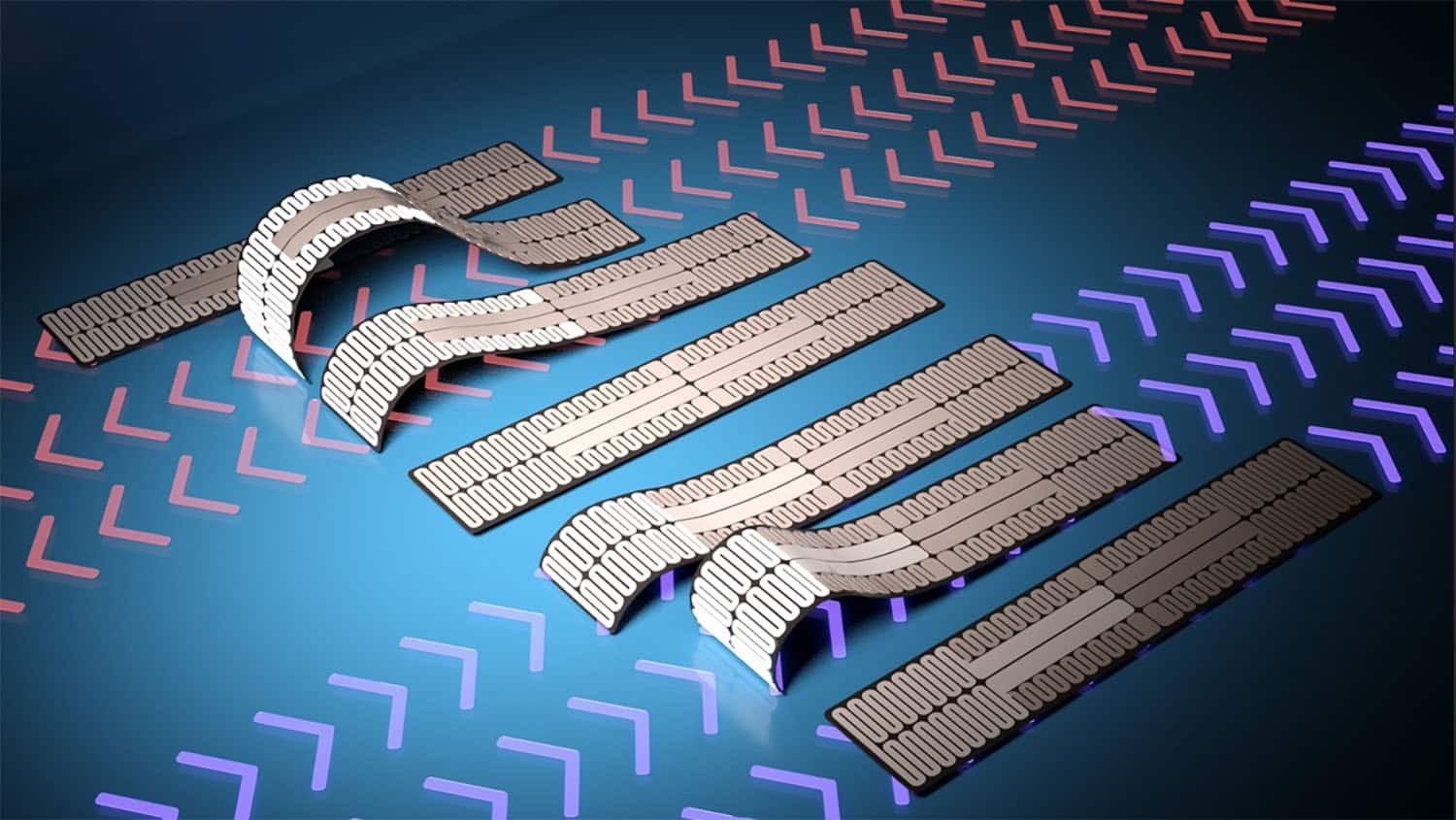
Image Credit: North Carolina State University
The caterpillar-bot’s movement is propelled by a novel pattern of silver nanowires that make use of heat to regulate the way the robot bends, thereby enabling users to guide the robot in either direction.
Zhu added, “Engineering soft robots that can move in two different directions is a significant challenge in soft robotics. The embedded nanowire heaters allow us to control the movement of the robot in two ways.”
“We can control which sections of the robot bend by controlling the pattern of heating in the soft robot. And we can control the extent to which those sections bend by controlling the amount of heat being applied,” continued Zhu.
The caterpillar-bot comprises two layers of polymer which react in a different manner while being subjected to heat. When exposed to heat, the bottom layer shrinks or contracts, while the top layer expands.
In the expanding layer of polymer, a pattern of silver nanowires has been fixed. The pattern consists of several lead points where scientists can apply an electric current. The scientists can control which sections of the nanowire pattern heat up by employing an electric current to various lead points and can control the amount of heat by applying less or more current.
We demonstrated that the caterpillar-bot is capable of pulling itself forward and pushing itself backward. In general, the more current we applied, the faster it would move in either direction.
Shuang Wu, Study First Author and Postdoctoral Researcher, North Carolina State University
Wu added, “However, we found that there was an optimal cycle, which gave the polymer time to cool—effectively allowing the ‘muscle’ to relax before contracting again. If we tried to cycle the caterpillar-bot too quickly, the body did not have time to ‘relax’ before contracting again, which impaired its movement.”
Furthermore, the scientists illustrated that the caterpillar-bot’s movement can be regulated to the point where users are capable of steering it under a very low gap. In essence, the scientists could control both forward and backward motion and also how high the robot bent upwards at any time in that process.
This approach to driving motion in a soft robot is highly energy efficient, and we’re interested in exploring ways that we could make this process even more efficient. Additional next steps include integrating this approach to soft robot locomotion with sensors or other technologies for use in various applications—such as search-and-rescue devices.
Yong Zhu, Study Corresponding Author and the Andrew A. Adams Distinguished Professor, Mechanical and Aerospace Engineering, North Carolina State University
The study was co-authored by Jie Yin, an associate professor of mechanical and aerospace engineering at NC State; Yaoye Hong, a Ph.D. student at NC State; and Yao Zhao, a postdoctoral researcher at NC State
The study was performed with financial support from the National Science Foundation, under grants 2122841, 2005374, and 2126072; and from the National Institutes of Health, under grant number 1R01HD108473.
Journal Reference
Wu, S., et al. (2023) Caterpillar-inspired soft crawling robot with distributed programmable thermal actuation. Science Advances. doi.org/10.1126/sciadv.adf8014.